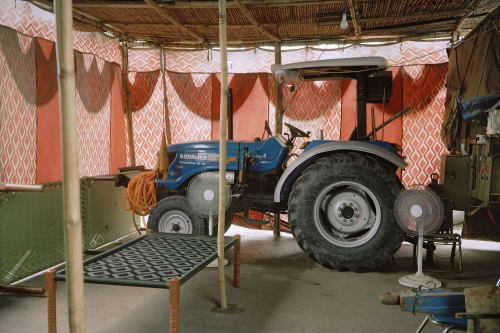Cauliflower plants stand in orderly rows across a patch of freshly tilled soil. Not yet in bloom, the garden is bordered by colourful tarpaulins, as if to shield the buds from wandering cattle. On one end, a low concrete boundary has been built, a subtle assertion of ownership. A water container rests serenely on a stone platform. Beyond the polyester divider, a bamboo hut peeks into view, its slanting roof also padded with tarpaulin. Perhaps it’s the home of the person who owns the vegetable patch.
Looking at this photograph, one might imagine it was taken deep in India’s hinterlands, where bamboo huts remain a familiar sight and growing vegetables is a way of life. But this hut and the garden were located not in a village but on a major road leading to Delhi.
Photographer Gauri Gill’s The Village on the Highway is a visual homage to an extraordinary feat of imagination, one that sprung from a year-long stand-off between the Indian state and the people who till the land. Its roots lie in three controversial laws passed in 2020 to reform the agricultural sector, which employs about half of the population, most of them earning woefully little. Prime Minister Narendra Modi claimed ownership of the reforms, asserting they granted farmers autonomy. Freed from socialist-era price regulations and local middlemen’s diktats, farmers were now ostensibly free to sell their crops to the highest bidder, whether state-owned companies or global supply chains.


